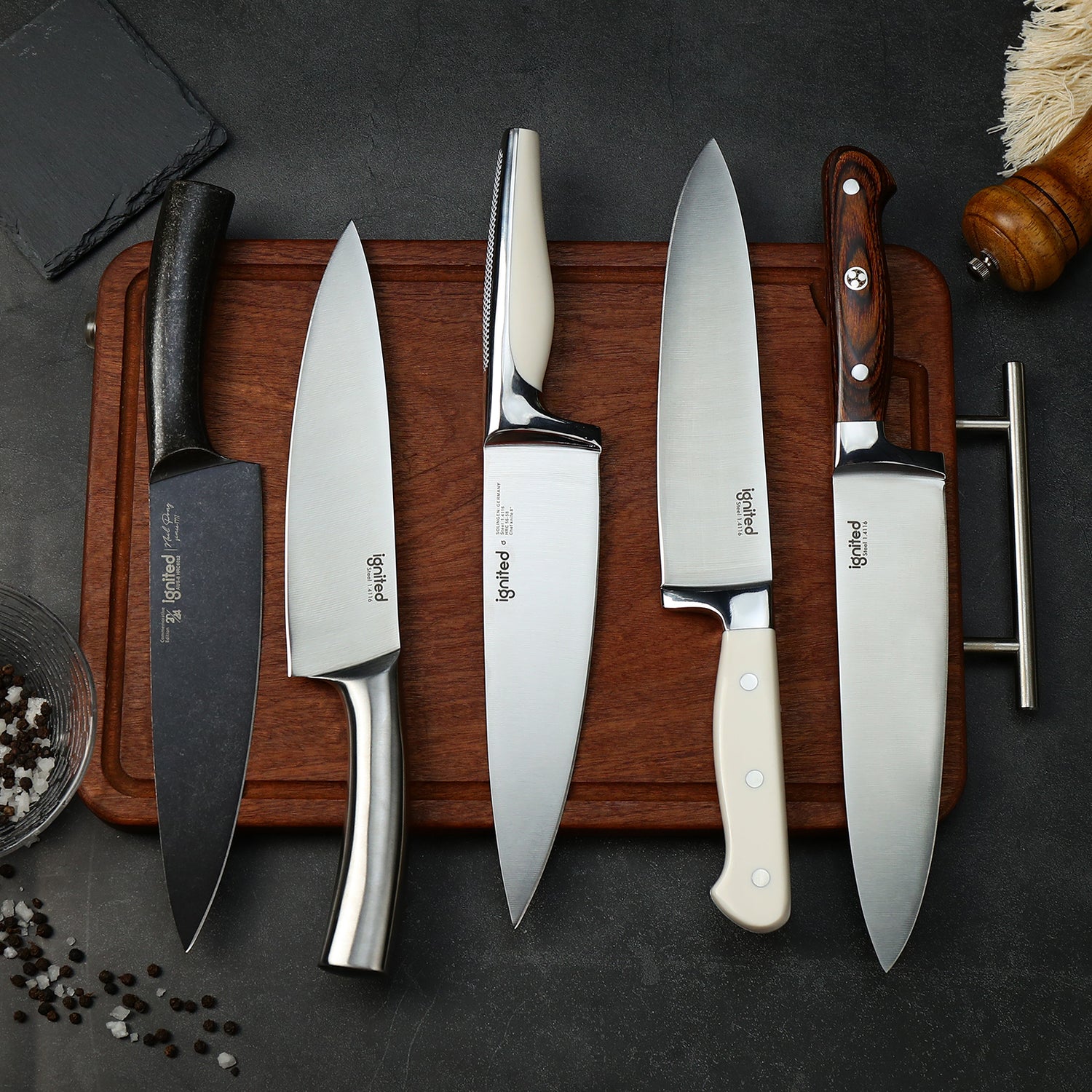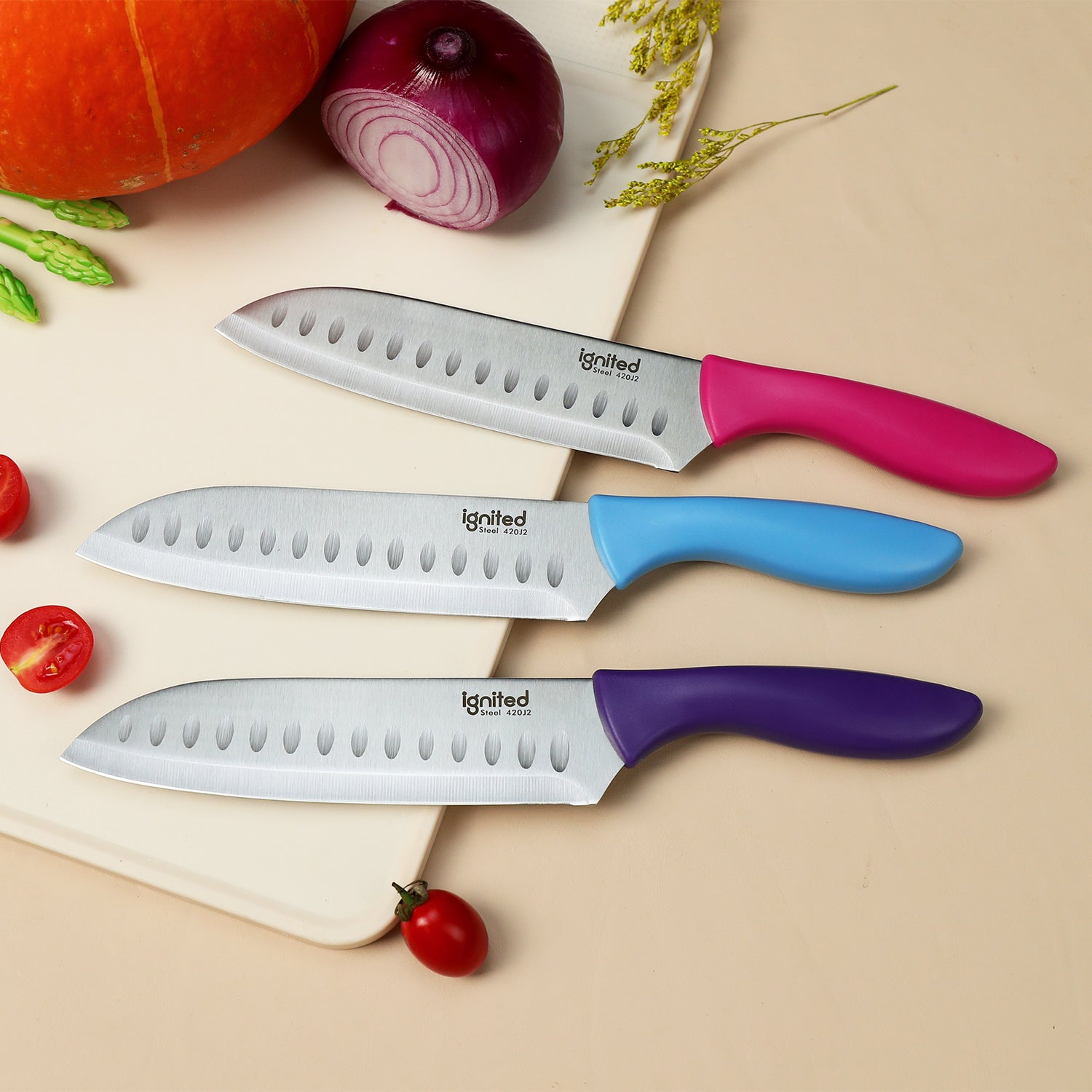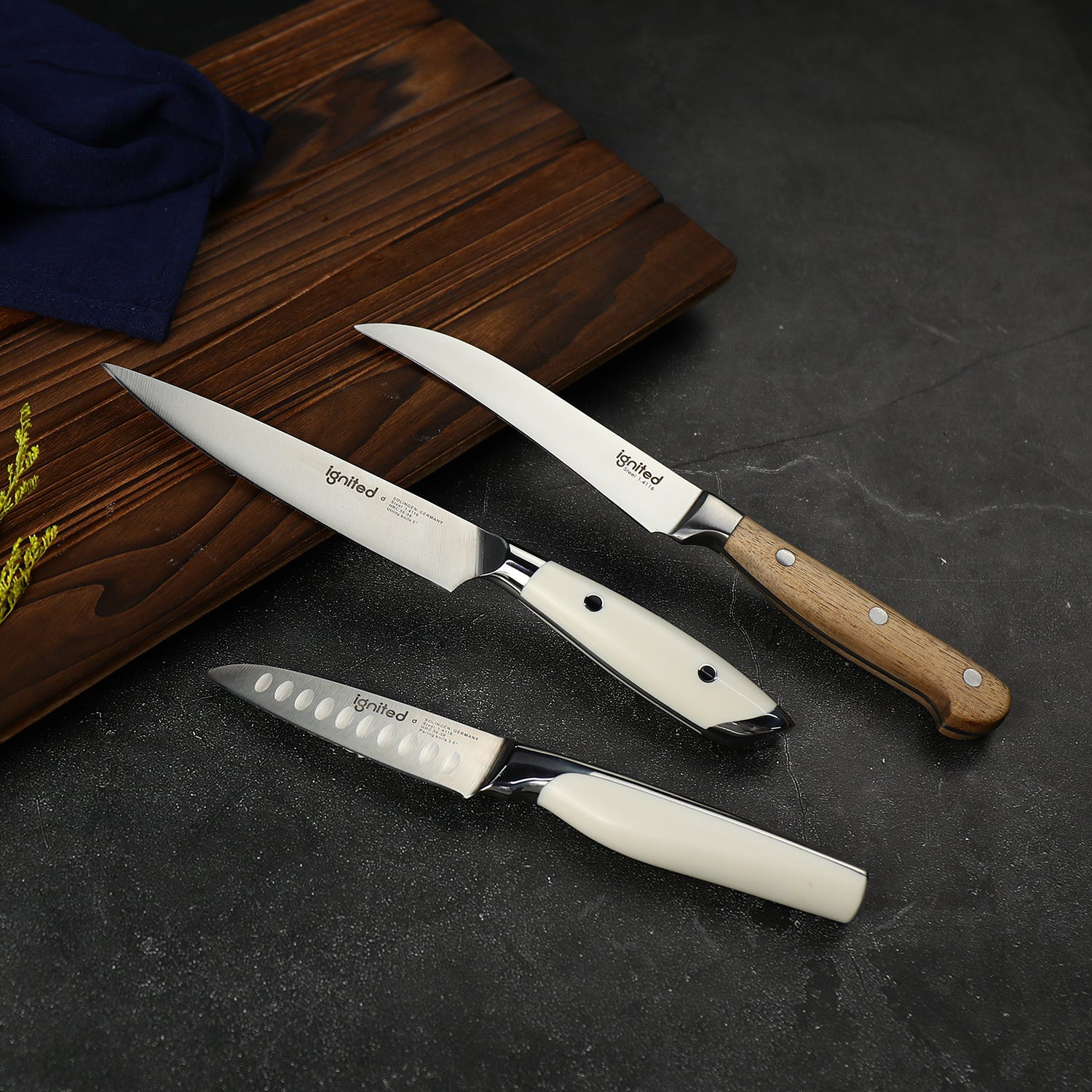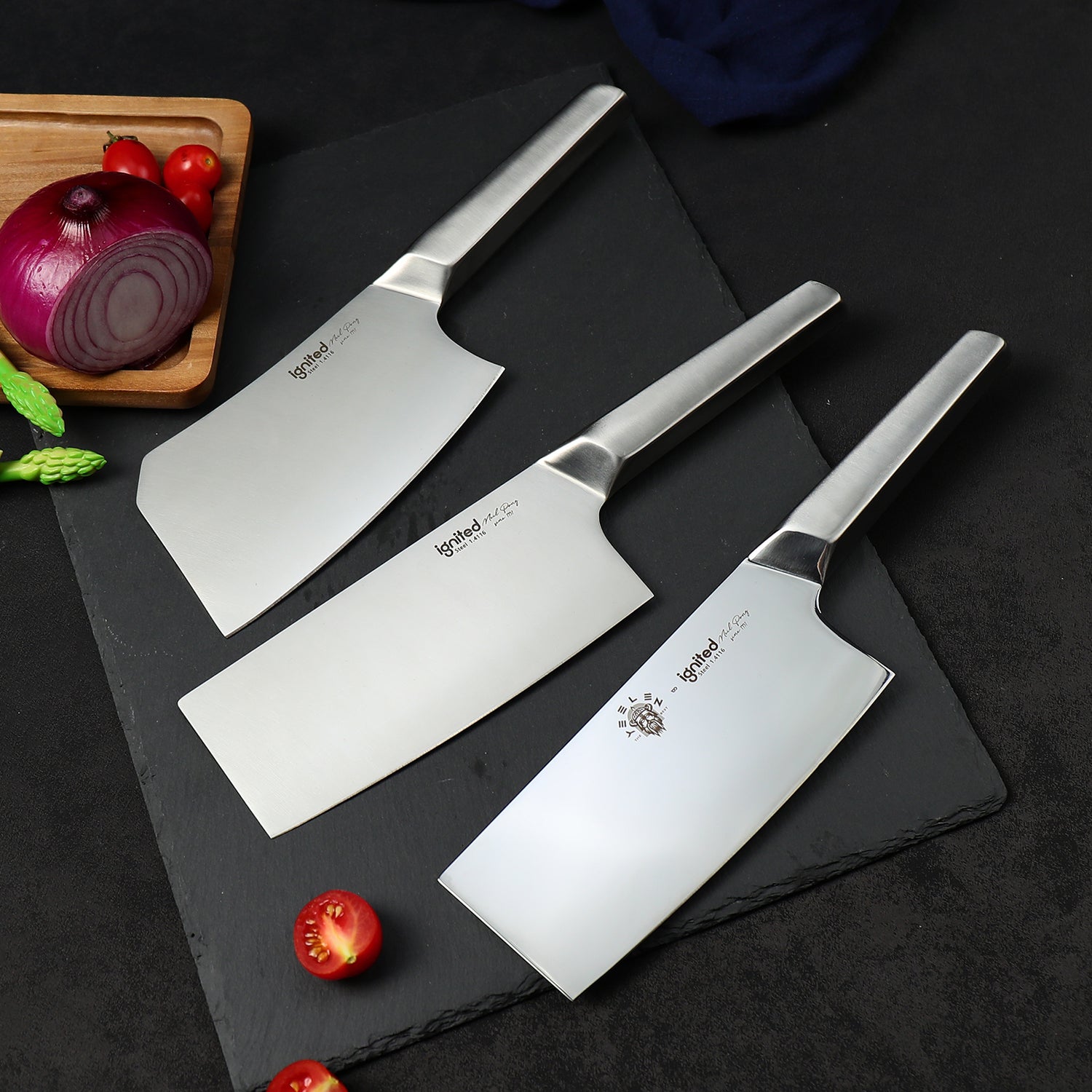In the world of kitchen cutlery, two knives stand out for their versatility and popularity: the Western chef knife and the Japanese Gyuto knife. While both are multi-functional workhorses found in professional and home kitchens alike, their design philosophies, blade geometries, and intended cutting styles set them apart. Whether you're a seasoned chef or an enthusiastic home cook, understanding the differences between these two knives can help you make a more informed decision for your culinary toolbox.
What is a Chef Knife?
The chef knife, often referred to as a “cook’s knife,” is a classic Western kitchen essential. Typically ranging from 7 to 10 inches in length, it features a broad, curved blade that tapers to a pointed tip. Designed for a rocking motion, it excels in chopping, slicing, and dicing. The robust build and heavier weight give it power and stability, making it a reliable all-purpose tool.
What is a Gyuto Knife?
The Gyuto knife is Japan’s answer to the Western chef knife. “Gyuto” means “cow sword,” but it has evolved into a precision tool for handling meat, vegetables, fish, and herbs. With a thinner blade, sharper edge, and more pointed tip, the Gyuto offers excellent control for push-cutting and fine slicing techniques.
Key Differences Between Chef Knives and Gyuto Knives
| Feature | Chef Knife (Western) | Gyuto Knife (Japanese) |
|---|---|---|
| Origin | Western culinary tradition | Japanese culinary tradition |
| Blade Curve | Pronounced for rocking motion | Flatter edge, ideal for slicing |
| Thickness | Thicker and heavier | Thinner and more agile |
| Blade Angle | ~20° | ~15° |
| Steel Type | Softer stainless steel | Harder high-carbon or stainless |
| Tip Design | Rounded and robust | Sharp and narrow for precision |
| Handle Style | Full tang, ergonomic grip | Hidden tang, lightweight wooden |
| Weight | Heavier, more stable | Lighter, better for finesse |
Similarities
- Multi-purpose functionality
- Typically 8 inches in length
- Double-beveled edges
- Support rocking and slicing
- Used by professionals and home cooks alike
Use Case Comparison
🧑🍳 Chef Knife
- Chopping root vegetables
- Mincing herbs
- Crushing garlic
- Heavy-duty cutting tasks
🍣 Gyuto Knife
- Slicing proteins
- Push-cutting vegetables
- Precision trimming
- Delicate prep work
How to Choose the Right Knife
- Cutting Style: Rocking vs. push-cutting
- Weight: Prefer power or finesse?
- Maintenance: Ease vs. longevity
- Cuisine Type: Western vs. Asian
- Grip: Full tang vs. traditional handle
Care & Maintenance Tips
- Always hand wash
- Dry immediately to prevent rust
- Use honing rods regularly
- Sharpen with whetstones
- Store in a knife block or sheath
Conclusion
The Chef knife and the Gyuto knife are both exceptional tools, but they cater to slightly different cooking philosophies. If you want durability and power, the chef knife is your go-to. If you're after sharpness and control, the Gyuto will elevate your slicing game. At Ignited Cutlery, we offer precision-forged versions of both styles—crafted with high-quality steel and ergonomic handles to help you cook with confidence.
FAQ
1. What is the main difference between a chef knife and a Gyuto knife?
The chef knife has a curved, heavier blade for rocking cuts, while the Gyuto has a thinner, flatter edge for push cuts and precision.
2. Which is better for beginners?
Chef knives are easier to maintain and more forgiving. Gyuto knives require care but offer better control for experienced users.
3. Can a Gyuto replace a chef knife?
Yes, many cooks prefer Gyuto knives for their versatility and sharp edge.
4. How should I sharpen a Gyuto?
Use a whetstone at a 15-degree angle. Avoid electric sharpeners.
5. What’s the best blade length for home use?
For Gyuto knives, 210–240mm is ideal for most users.




